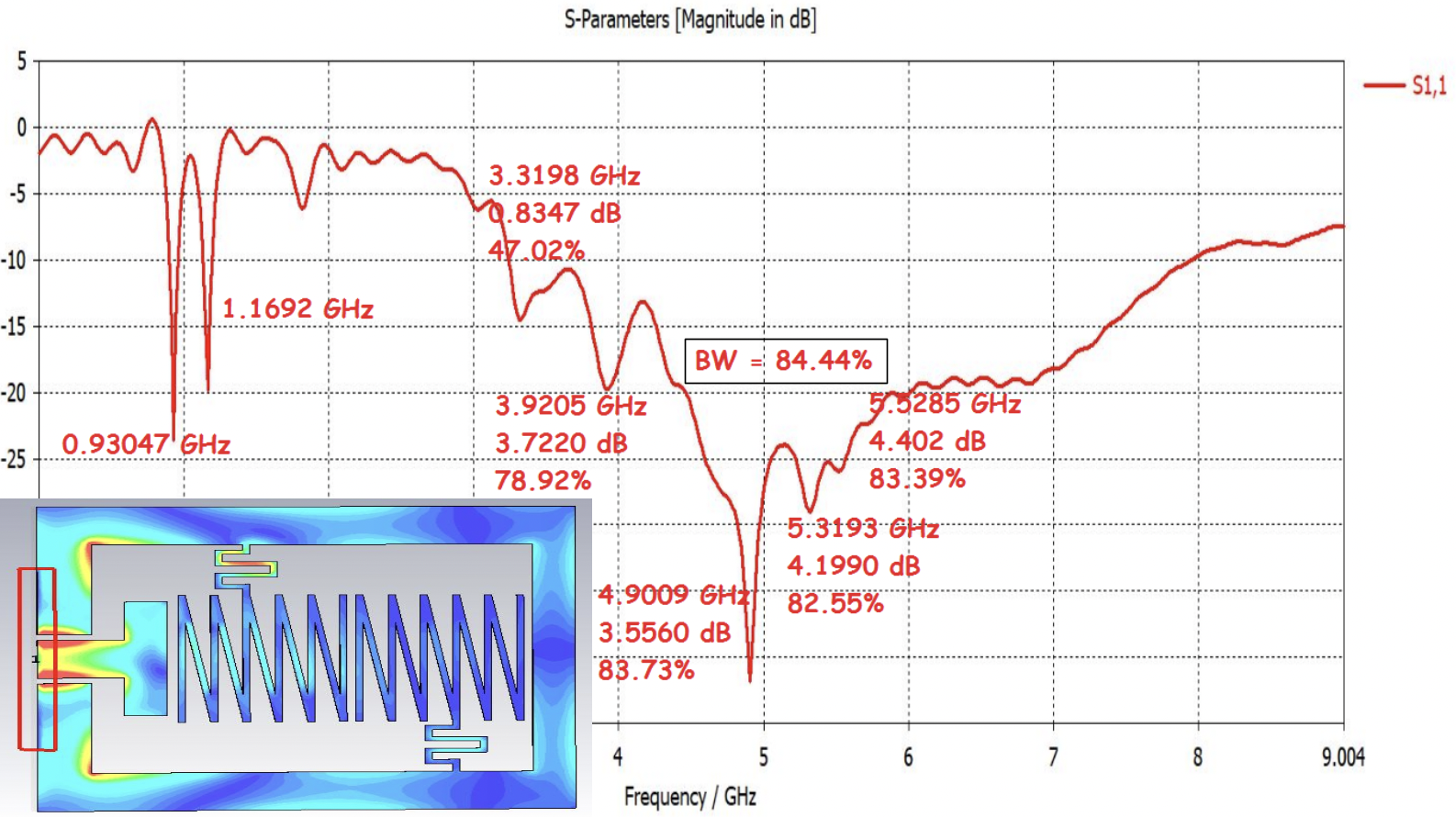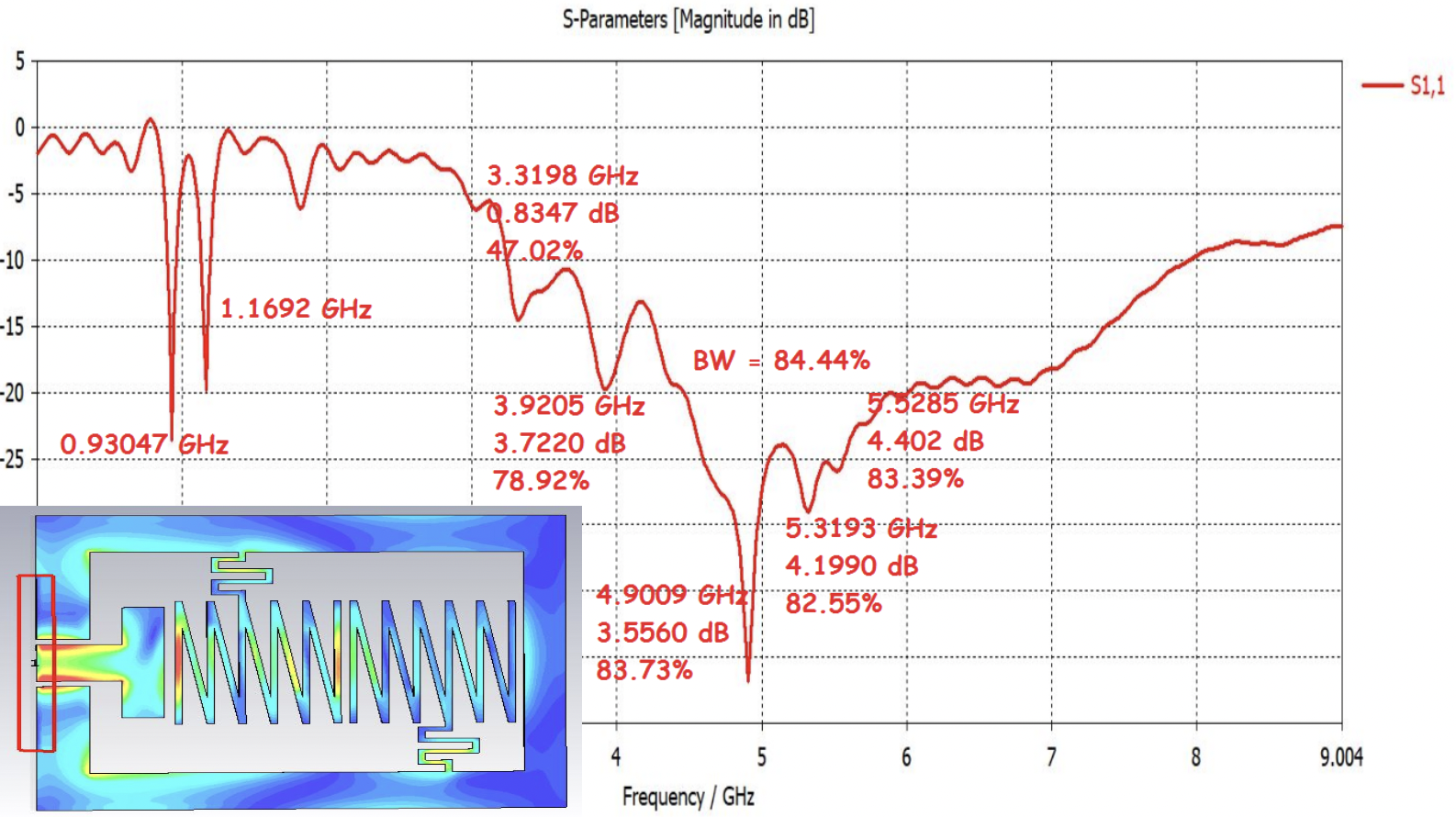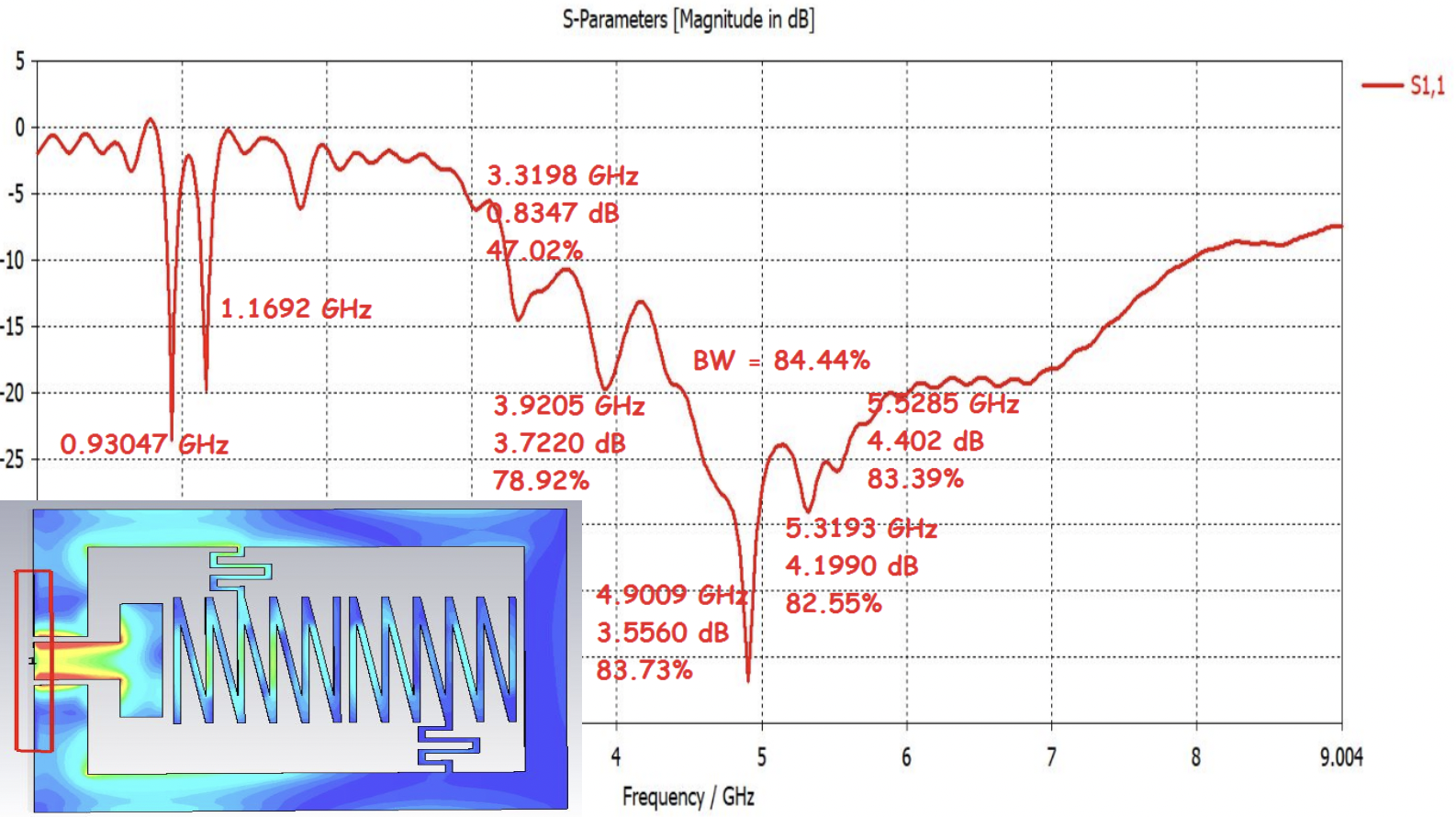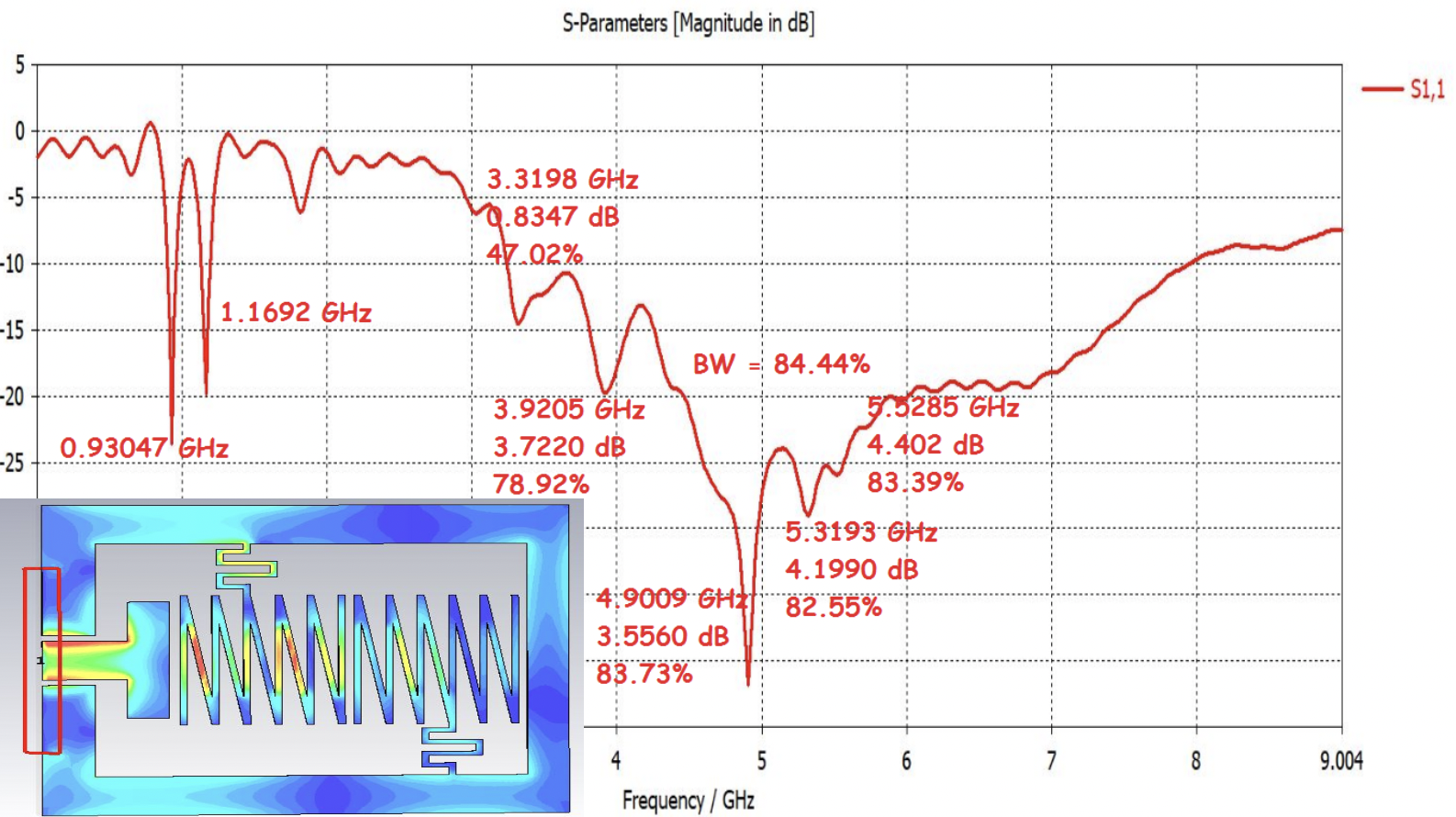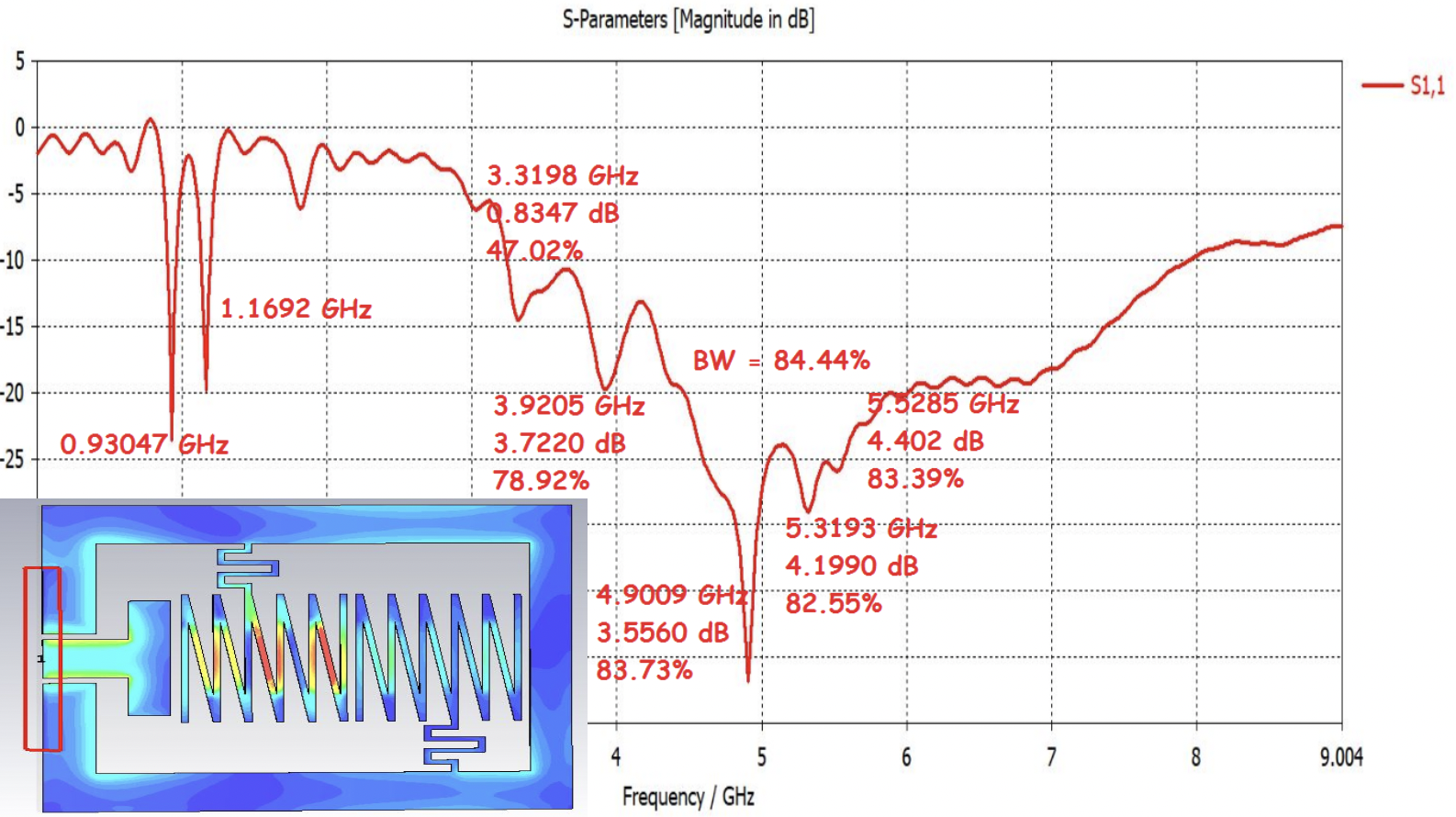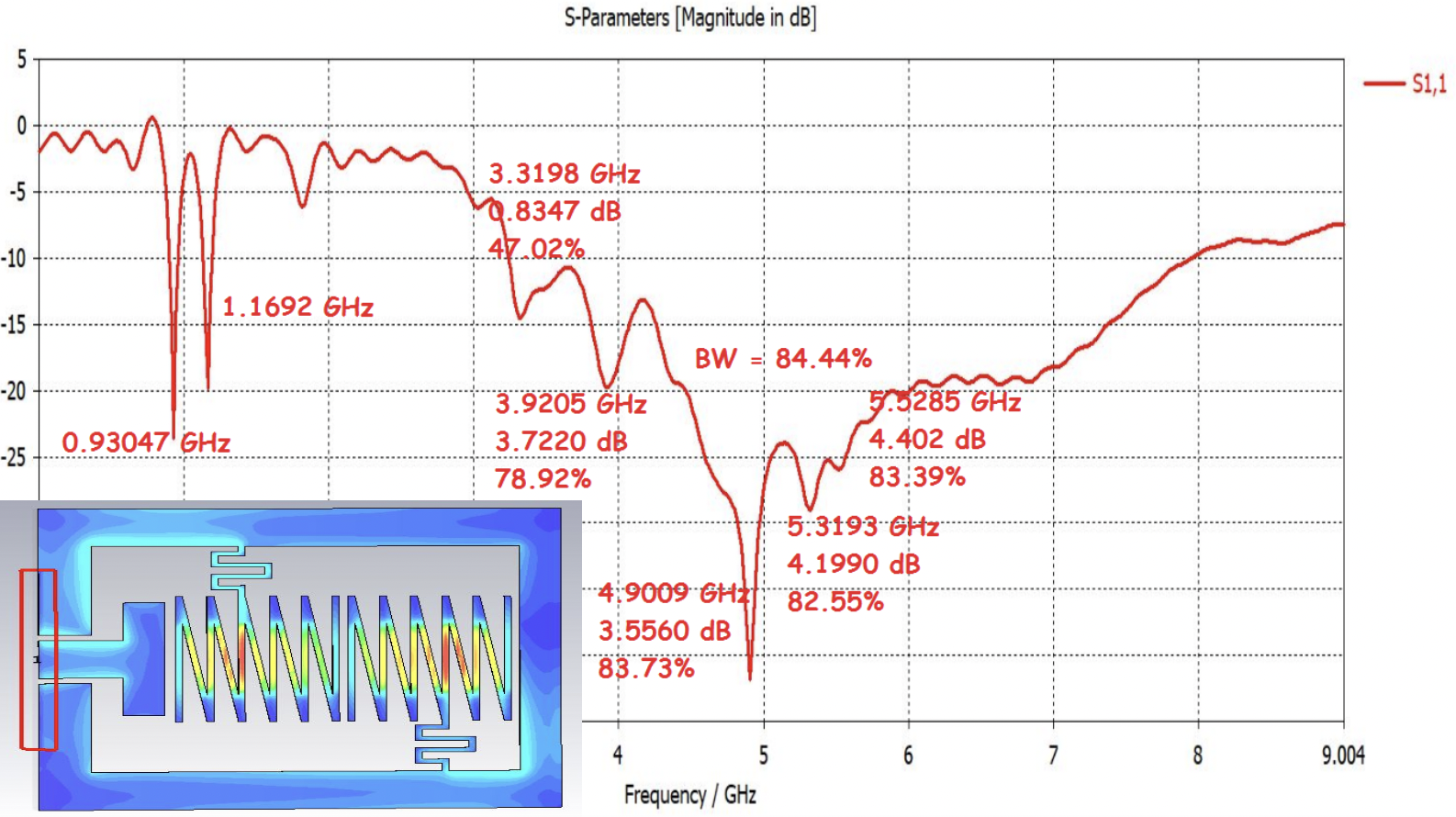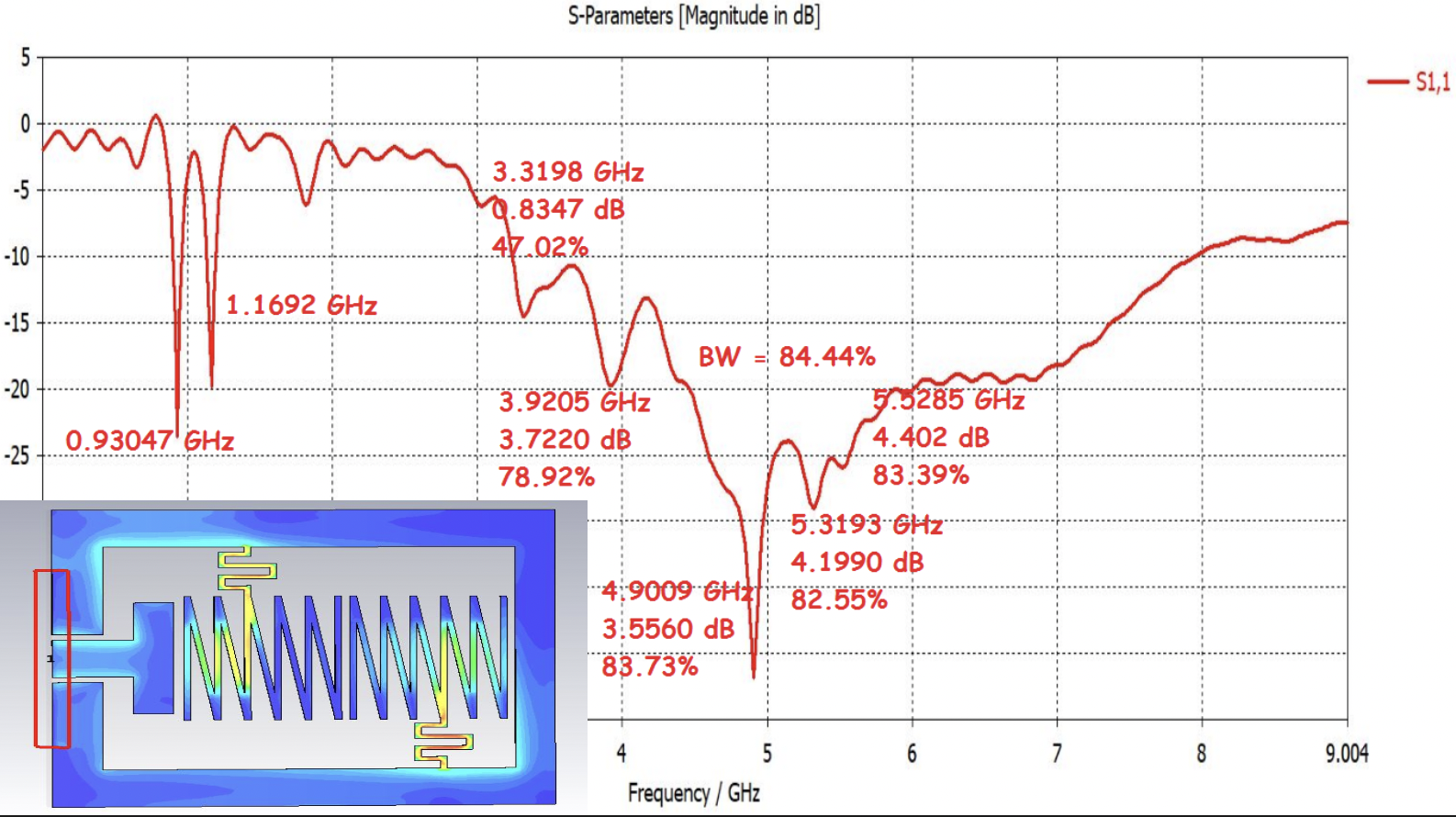We built the cells that can power wearables, and we figured there is no way wearables can communicate over small distances. The given antennae which was later fabricated in Taiwan took 257 iterations to develop, each one taking 2 hours to get the required S values in the desired bandwidth. Why so many iterations? Thats where magic comes in, CRLH antennae being designed till now all had parallel designs, that thing pinched me a little, why not use anti parallel designs? Designs that can drive the electromagnetic radiation in two different directions to increase oscillation. Using a via, we made possible designs for am antennae that can communicate in the desired range with over 400 hours worth of work. Now your wearables can talk both outside and inside the body



